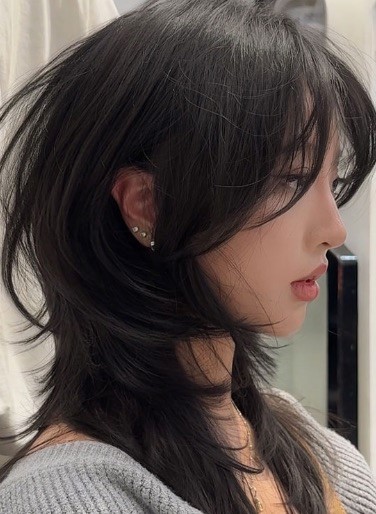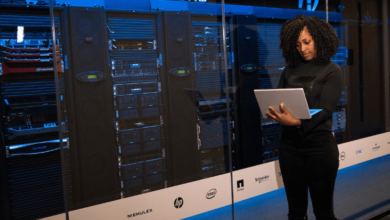Which Industries Should Adopt Virtual Try-On Technology?

virtual try on technology is transforming how consumers interact with products across various industries. This innovative technology allows individuals to visualize how items will look on them or in their environments before making a purchase. By leveraging augmented reality (AR) and artificial intelligence (AI), virtual try-ons enhance the shopping experience, making it more engaging and personalized. In this article, we will explore various industries that can benefit from adopting virtual try-on technology, highlighting its potential to enhance engagement, sales, and overall customer experience.
Fashion & Apparel Retail Revolution
How Can Virtual Fitting Rooms Reduce Returns?
The fashion and apparel retail sector is one of the most promising areas for virtual try-on technology. Virtual fitting rooms allow customers to see how clothing items will fit them without physically trying them on. This capability is particularly beneficial in an era where online shopping is increasingly popular. For example, a customer browsing a clothing website can upload their measurements and visualize how different styles will look on their body type. This feature not only helps shoppers find the right fit but also minimizes the frustration of ordering items that do not meet their expectations. By reducing the number of returns, retailers can save on shipping and restocking costs, which can significantly impact their bottom line.
What Are the Benefits of AR-Powered Accessory Try-Ons?
In addition to clothing, virtual try-on technology is making waves in the accessory market, including glasses, watches, and jewelry. AR-powered accessory try-ons allow customers to see how different items will look on them in real-time. For instance, when shopping for sunglasses, a customer can use their smartphone camera to overlay various styles onto their face. This interactive experience not only makes shopping more fun but also helps consumers make better choices. Moreover, the ability to visualize accessories before purchasing can reduce buyer’s remorse and enhance customer confidence.
Beauty & Cosmetics Industry Transformation
Virtual Makeup Try-Ons
The beauty and cosmetics industry has also been significantly impacted by virtual try-on technology. Virtual makeup try-ons allow customers to experiment with different products, from lipsticks to full-face makeup, without physically applying anything. This feature is particularly appealing for those who want to try new looks but may be hesitant to commit to a purchase. For example, a customer can use an app to apply various lipstick shades virtually, helping them determine which color best suits their complexion. This technology not only enhances the shopping experience but also empowers consumers to make informed decisions.
Hair Color Simulation & Style Preview Tools
In addition to makeup, virtual try-on technology can be applied to hair color simulation and style preview tools. Customers can experiment with different hair colors and styles virtually, allowing them to visualize how a change might look without the commitment of dyeing their hair. For instance, a customer considering a dramatic change, such as going from brunette to blonde, can use a virtual tool to see how the color complements their features before making the leap. This technology is particularly beneficial for salons and hair product retailers, as it can drive foot traffic and product sales. When customers feel more confident about their hair choices, they are more likely to book appointments or purchase hair products.

Home Decor & Furniture Shopping
The home decor and furniture shopping sector is another area poised for transformation through virtual try-on technology. AR room visualization tools allow customers to see how furniture will look in their homes before making a purchase. For example, a customer can use their smartphone to project a virtual sofa into their living room, helping them visualize how it fits with existing decor. This capability is invaluable for individuals who may struggle with spatial awareness or those looking to redecorate. By providing a realistic representation of how furniture will look in a specific space, retailers can help customers make more informed decisions. This technology can also reduce the likelihood of returns, as customers are less likely to order pieces that do not fit their aesthetic or spatial needs.
Healthcare & Telemedicine Innovations
The healthcare industry is beginning to explore the potential of virtual try-on technology, particularly in telemedicine. Virtual try-ons can enhance patient consultations by allowing healthcare providers to visualize treatment options or medical devices on patients. For example, a doctor could use AR to demonstrate how a particular medical device would fit or function on a patient’s body, providing valuable context during consultations. This technology can also improve patient education, as individuals can see how treatments may affect their appearance or functionality.
Automotive & Eyewear Specialized Uses
Virtual Car Customization
The automotive industry is another sector where virtual try-on technology can provide significant benefits. Virtual car customization tools allow potential buyers to visualize different vehicle options and customizations before making a purchase. For example, a customer can use an AR tool to see how various paint colors, wheel styles, and interior options will look on their chosen vehicle. This interactive experience not only makes the buying process more enjoyable but also helps customers feel more confident in their choices. By offering virtual car customization, dealerships can enhance customer engagement and streamline the purchasing process.
Sunglasses & Prescription Lens Try-Ons
In the eyewear sector, virtual try-on technology allows customers to see how different glasses or sunglasses will look on their faces. This capability is particularly valuable for individuals who are shopping online and may be unsure about how a particular style will complement their features. By using AR, customers can overlay various frames onto their faces, helping them visualize how each option looks in real-time. This technology not only enhances the shopping experience but also increases customer confidence in their purchases.
Conclusion
Virtual try-on technology holds immense potential across various industries, transforming how consumers interact with products. From fashion and beauty to home decor and healthcare, the ability to visualize items before purchase enhances customer engagement and satisfaction. Moreover, with innovations like the comprehensive SDKs offered by Tencent RTC, which include features for video calls, conferencing, and real-time communication, businesses can easily integrate virtual try-on capabilities into their platforms. This versatility allows for a wide range of applications, from virtual makeup try-ons to AR room visualizations. As industries continue to explore the possibilities of virtual try-on technology, customers can look forward to a more personalized and enjoyable shopping experience that meets their needs and preferences.




